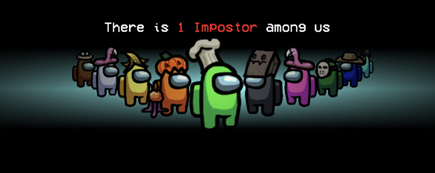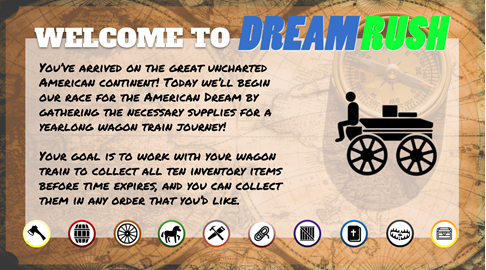While in quarantine with my three young school-age children, I saw first-hand the struggles teachers face keeping students engaged in online lessons. With distractions all around from pets to siblings, to games and snacks, it’s hard to design tasks that compete! One thing that I noticed ALWAYS hooks and retains my kids’ attention is games. And over the course of our 10 months at home together, I have become very well acquainted with one of their favorites… Among Us. If you’re not familiar with the online game that is the focus of so many young minds, you’ve been missing out! Here’s a quick overview to get you caught up:

Among Us is an online game of deduction, where a group of players, called crewmates, work to complete simple tasks around their spaceship in preparation for launch. One or more players are randomly selected as alien imposters that work to eliminate the other crewmates without getting caught. Crewmates gather together at times to discuss and vote off any suspicious crewmates (described as “sus”). When crewmates successfully vote off the imposter(s) or complete all space tasks, they win. When imposter(s) successfully eliminate all other crewmates, they win!
See what I mean? Among Us draws kids in with universal elements of gaming– an engaging story, competition with and against others, strategy, and rewards. The “gamification” of learning, adding gaming elements to classroom activities to increase engagement and enjoyment, is fast becoming a go-to strategy for teachers looking to boost motivation and inject some fun into their day!
Ready to get started with gamification in your classroom? Here are a few things you’ll need to know.
1. LEARN some of the basic elements of game playing:
To add genuine excitement and fun to a non-game setting you can insert universal gaming elements like a story arc, leaderboards, and side quests. Imagine presenting your unit on ancient civilizations as a battle to conquer Rome!
Basic Game Elements
| Achievement | Story | Time Pressure | Personalization |
| Points Badges Levels Leaderboards Certificates Easter eggs | Teams Mystery Unexpected twists Narrative arc Quest: The Hero’s Journey Problem Solving | Counting-up Counting-down Escape rooms | Avatars Characters Choices Choose Your Own Adventure Side Quests |
For a longer list of gamification elements, scroll through 52 Gamification Mechanics and Elements.
2. ASK yourself these guiding questions:
As you consider your curriculum and students, think about which elements would align with content, skills, and student preferences.
- What are some of your students’ favorite games?
- What sort of skills are needed to be successful at these games?
- What modifications could you make to adapt the games to your classroom?
- What elements of gaming lend themselves to your class structure or content?
- How can I add some competition or track progress?
- How can I add a sense of adventure or mystery to my lesson?
3. Make a PLAN:
Take some of the ideas you’ve been tossing around and develop a game plan. Stumped for ideas? Here are a few that we love!
Start Simple with Math Skill Badges
Develop a Story and Implement Competition Tasks
Gamify Your Course Syllabus Review

4. TRY it out:
For your first gamified lesson, don’t bite off more than you can chew! Start small with one class period, one subject, or a game structure your students are familiar with. Once you have a sense of your students’ engagement level and have a better understanding of any supports your learners will need, you can do more. During the game take notes, record video, and don’t forget to join in the fun!
5. Ask your students for FEEDBACK
At the conclusion of your gamified lesson, engage students in a discussion using these questions:
- Would you choose to play or experience this game again?
- How would you improve the experience for other students?
- What did you learn while participating in the game experience?
If your students are like my children, they will have become engaged in the gaming experience you’ve created to the point that they will have lost track of time! Your students will be begging to continue and will be motivated to see what new gamified lessons you have planned for the future.







